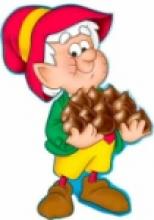Every year at this time
in the U.S. I have to prepare myself for an onslaught of Irish pop-culture that, while it's pop-culture, is more American than Irish. For instance, until recently, when St. Patrick's Day celebrations in Ireland have begun to garner American tourist dollars, St. Patrick's day was a day for Catholics to go to Mass and have a dinner at home with their families. But thanks to American popular culture, and the Internet, we've ended up with a lot of assumptions about what it means to be Irish in America on the 17th of March.To Wit:
- Corned beef; it's not Irish as much as Irish American. A nice piece of bacon, cooked with cabbage and praties (potatoes) would be more traditional, or Irish bacon with Colcannon.
- Shamrocks are not four-leaved clovers. They are in fact one of two varieties of a three-leafed old white clover. Traditionally, and in the medieval context, the Shamrock was a member of the the clover species Trifolium repens (in Irish seamair bhán). In more recent times, the shamrock is often a member of the Trifolium dubium species (in Irish: seamair bhuí). The shamrock became a symbol of Ireland because (according to eighteenth century folklore) St. Patrick used a shamrock to explain the nature of the Christian trinity of Father, Son and Holy Spirit to the Pre-Christian Irish. Shamrock is an Anglicization of Irish seamróg, a medieval Irish diminutive form of the word for clover, seamair bhán.
- Green beer is a violation of all that sacred in beer. If you want something Irish, have a pint or three of Guinness. If you get it on tap, for heaven's sake, make sure the barkeep knows how to pour Guinness properly. I note that St. Patrick's Day usually falls during Lent, when in Medieval Ireland, brewers made a "small beer" from malted barley. There is, by the way, good reason to associate St. Patrick's feast day with beer consumption, since we are told in the compilation of laws that St. Patrick ordered, the Seanchus Mor, that he himself had a personal brewer on his staff.
- The Leprechaun, or Irish leipreachán, is a creature from medieval Irish mythology texts, where they are known as luchrupán in Middle Irish, derived from Old Irish luchorpán, itself a compound of lú (small) and corp (body), a Latin loan-word. In medieval Irish, luchorpán are small but mighty warriors living underwater, with strong associations with fertility, and known for their sexual capacity (yes, the stories are very bawdy), rather than their avarice.
